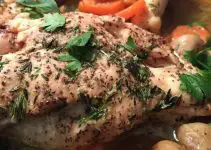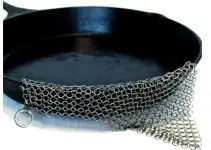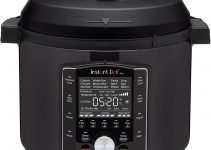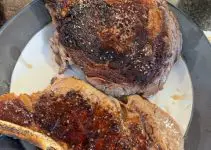You have probably heard a lot about the wonderful way that eggs can be cooked sous vide. Well this article will uncover the truth about sous vide eggs, and the kind of results you can expect at different cooking temperatures and cooking times.
For the past few years, up market restaurants have been serving eggs sous vide to the delight of their patrons. Now you can delight your dinner guests with these eggs too. All you need is a best sous vide cooker and a little time.
The good thing about eggs is that you can cook them in their shell. There are other times when using a sous vide bag is required, and we will cover that in another recipe. This is really about what results the home sous vide cook can expect with “in shell” cooking.
There Are More Than Two Parts To An Egg
Most people believe that there are only two parts to an egg, but there are actually three parts which are the yolk and two whites – the loose white and the tight white. Why do you need to know this? Read on to find out!
The yolk of an egg is where the main nutrition can be found. It has a number of minerals and vitamins as well as protein and fat. The yolk is bound in a membrane that maintains the “roundness” in the egg.
Then there is the tight white part of the egg, which is housed in a membrane that is delicate. It contains proteins and fatty acids, and a very small amount of minerals and glucose, which make up 10% of the tight white. The remaining 90% is water.
Lastly there is the loose white, which is separate from the tight white membrane. Think about when you break an egg, you will see a white substance which spreads itself around away from the main part of the egg. The loose white contains much less proteins and minerals than the tight white.
When eggs mature their yolks and tight white membranes become thinner, and the tight white will expel moisture into the loose white layer making it even thinner and runnier. When an egg is raw, it is just water made thick by proteins. When you start to cook the egg everything loosens up, and the constituent parts start to mesh with one another.
Further cooking of the egg will tighten up this mesh, and the emulsions within will break up and the once tender egg will change to eventually becoming crumbly and dry. This information is important for sous vide cooks to understand.
How Your Eggs Will React To Suvee Cooking Temperatures
The three different parts of the egg will react differently when they are under heat. This is because of the different concentration of proteins in each part of the egg. The tight white part of the egg will be the first to set, but they will not completely firm up until the cooking temperature is higher.
Loose whites will stay watery for some time, until quite a high temperature is achieved and the yolks sit in the middle. At medium temperatures yolks will start to gel, and they will become firmer when the temperature is raised.
Let’s say that you want to use eggs as a Caesar salad dressing or want to create mayonnaise. There is no need to use raw eggs here and be concerned about safety. Just cook your eggs sous vide at 130°F for a few hours and you will sterilize them making them totally safe. You will not change the constitution of the eggs by doing this. No meshing or gelling will take place at this temperature.
If you want to make your eggs distinguishable from raw, then you need to hike up the temperature to 140°F. At this temperature, the tight white part of the egg will set firm, but the loose white will still be watery and the yolk will look like it is still raw. The egg will be very fragile and it will fall to pieces easily.
Jump up another 10° to 150°F and things really start to happen. The yolk of the egg will now transform from the runny raw state, to a soft and supple texture which will hold its shape. The loose white will still be a little watery, but will contain lumps of protein and the tight white will be solid and firm.
To remove any signs of a watery texture, you need to raise the cooking temperature to 160°F. This will ensure that the tight white will be solid and tender, the loose white will also be solid and tender, and the yolk will be firm and still remain supple.
Looking for hard boiled eggs? Just raise the temperature again to 165°F. Your eggs will still be tender, but they will not be rubbery. The yolks will not be “chalky” either which can happen with conventionally cooked hard boiled eggs.
Cooking Time Is Important For Your Eggs Too
You may have heard that it doesn’t matter how long you cook your eggs for, but this is not the case. The truth is that it takes time for an egg to mesh together and gel, and the longer that you cook it, the thicker and firmer it will become. This is particularly true when it comes to egg yolks.
If you cook an egg at 145°F for around 45 minutes you will notice that the yolk still has a raw look, and the white of the egg is just starting to firm up. If you extend the cooking time to 60 minutes then the yolk will become a little thicker.
Cook for 90 minutes and the yolks are becoming thicker like a pudding. The whites will not have changed that much. At two hours the yolks are getting even firmer and the whites have still not changed all that much.
Knowing the impact that different temperature and cooking times have on your eggs, you can now cook eggs sous vide just how you want them. Soft boil, hard boil or poached? It is all there for you, and all you have to do is set the right cooking temperature and cook for as long as you require.
Use An Immersion Circulator To Cook Perfect Eggs
Immersion circulators used to cost a small fortune, but now you can buy a high quality piece of equipment for around $200. The Anova Culinary Bluetooth Precision Cooker is a perfect example, so please read our review.
Not what you’re looking for? Head on over to our super comprehensive article on best sous vide machine reviews and sous vide vacuum sealer reviews!







This information would look great on a chart. I would love to have something easy like this to hang up in my house to remind me of all the cooking temps& times for eggs instead of having to look it up each time.
Great suggestion, Sue. We’ll get on that!
One of the facts I learn from this article is that eggs have three parts. I love the way you described the cooking techniques and the tips will surely help me change how I prepare my eggs.
Hi Joe,
I have been cooking with “suvee” (lol) for years, and love love love it. But I have not had much success with whole eggs. I’ve cooked yolks in vacuum bags for both the Modernist Cuisine mayo and Modernist Cuisine at Home cream pie (to very different temps and textures!) and both worked beautifully. But the one time I tried to do whole eggs, they were a runny, disgusting mess. I don’t recall the temp I used (I’m sure I got it from a book!), but it must not have been high enough. Anyway, this article has inspired me to try it again. I’ll let you know how they turn out. Thanks.
Hi Melanie!
Thanks for dropping by. You’re not alone in having trouble with sous vide eggs. My father-in-law somehow messes them up each and every time. We just cannot figure out why!
How did yours turn out after giving it another go?
Best,
Joe